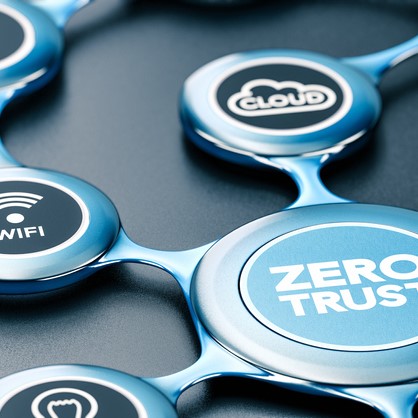
RECENT ARTICLES
Prior to 2020, many organizations had non-existent or partial remote work infrastructure. Covid changed the work culture and the shift put remote work and collaborative technologies to the test at a scale we have never seen before. Several organizations became remote workforces within a matter of days. While the implementation of remote work tools was absolutely required for business continuity, these tools have also created security exposures.
Legacy technologies were designed to prevent data from moving outside traditional security perimeters and were never built for collaborative workforces. Cloud applications, personal devices and remote access tools have essentially eliminated organizations’ security perimeters, resulting in more cyberattacks and security compromises as IT Leadership struggles to manage the new technologies.
Since remote and hybrid work are here to stay, the resulting cybersecurity risks will remain until organizations adapt and secure the remote workforce.
HOW DO I CLOSE THESE SECURITY GAPS?
Start with a Security Framework (NIST, CIS, ISO)
- A security framework will give you a blueprint for the steps you should take and how to prioritize those steps. Security frameworks will also help you prepare for compliance audits. Choose your framework wisely to fit your organization’s needs, and keep in mind some frameworks are more flexible and adaptable than others.
Protect your End Points
- The market for end point protection offers myriad solutions and providers. Solutions should detect and hunt threats in real time, protect your corporate devices from malware and malicious applications, and allow your team to investigate security incidents and alerts. They should allow administrators to manage devices, investigate and remediate efficiently. Due to the plethora of offerings in this space, we recommend you engage a trusted partner to evaluate your priorities and help navigate your solution selection.
Consider a Security Information and Event Management (SIEM) Solution
- SIEM solutions aggregate and analyze data to spot abnormal behavior that could signal a security threat. SIEM solutions will provide detection, notification, alert, forensic and response capabilities.
Consider Zero Trust Network Access (ZTNA) for Remote Employees
- With ZTNA, nobody is trusted, whether they are outside or inside the network perimeter. Strict identity verification is required for every device or user trying to gain access to resources via the network. Each user is provided with only the access they need for their work. And the network is micro-segmented…much like a ship with separate, sealable compartments to prevent flooding throughout, the network is compartmentalized so security breaches can be more easily contained.
Implement a companywide Phishing and Security Awareness Training program
- Employees create some of the most significant weaknesses in security defenses. Attacks have become increasingly sophisticated, so team members need to be trained (and retrained) to spot and dodge phishing attacks, properly manage credentials, and follow security protocols. Your IT team can perform this training, or you can opt for online training or outsourced trainers.
Simplify offers guidance in all these areas and will engage our Security Practice Lead to discuss your priorities, exposures, and plans. We can help understand the solutions needed and the best providers available in the industry that suit your organization’s needs.
START A CONVERSATION:
 Digital Changes Everything…
Digital Changes Everything… Closing the Cybersecurity Gaps Created by WFH
Closing the Cybersecurity Gaps Created by WFH Contact Center Projects – Balancing Stakeholder Priorities
Contact Center Projects – Balancing Stakeholder Priorities Optimizing Telecommunications Expenses Through Deep Dive Analytics
Optimizing Telecommunications Expenses Through Deep Dive Analytics